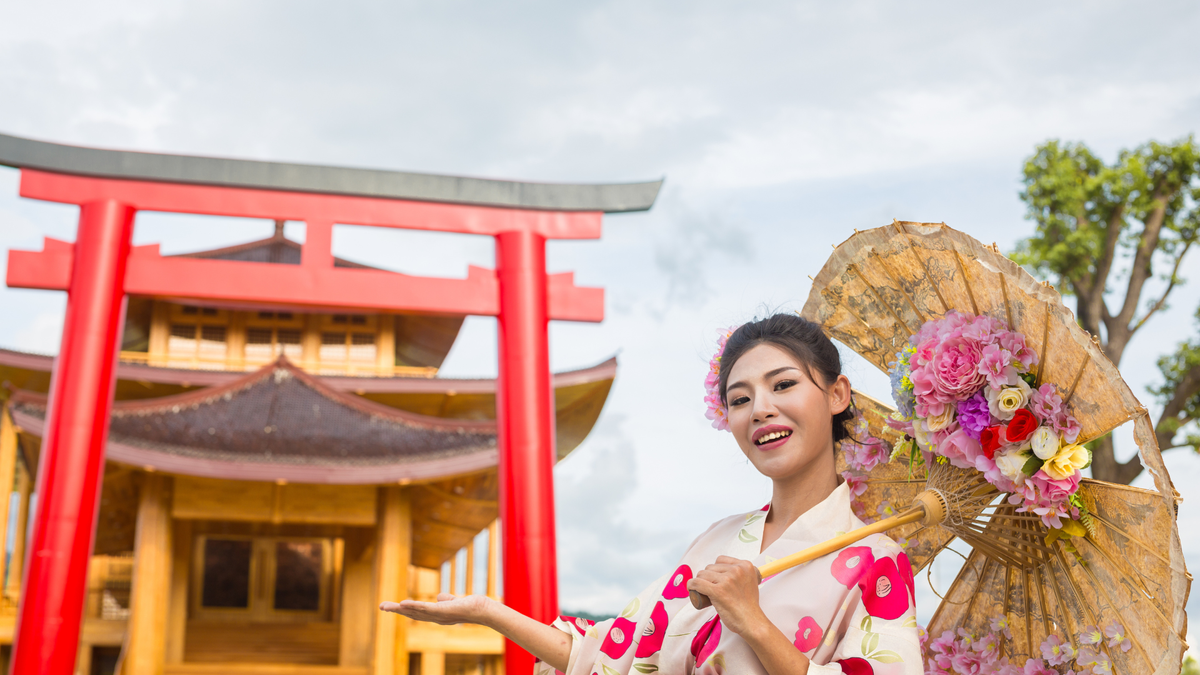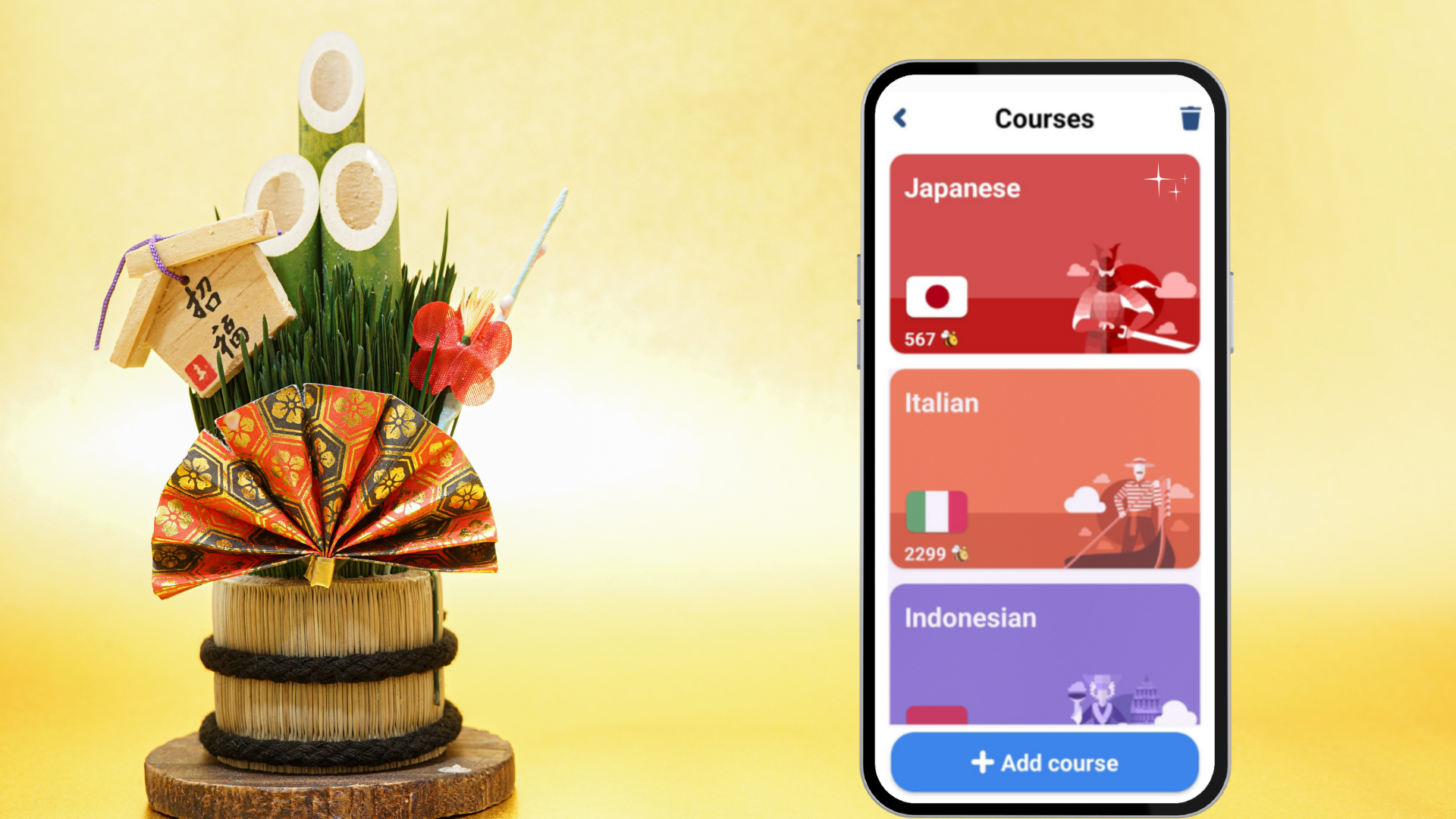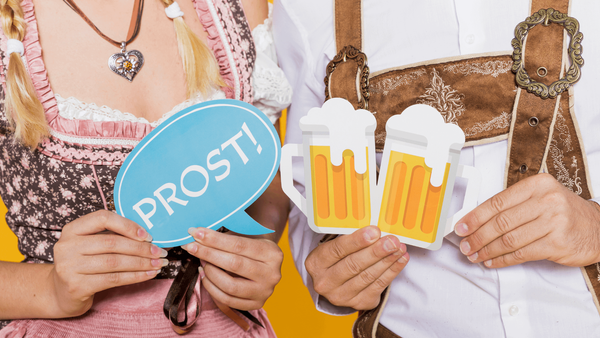Essential Japanese Phrases for Travel

Japan welcomes, on average, from 30 to 37 million international visitors each year. The number reached a record in the first half of 2025, marking a 24.5% increase compared to the previous year. Japan is famous for its iconic landmarks, such as Fushimi Inari-taisha Shrine, the Kinkaku-ji Temple, Nara Park, Osaka Castle, and its stunning landscapes, including Mount Fuji, Kenrokuen Garden, and The Great Wave off Kanagawa. Connect with locals on a deeper level and learn more than what's available in tour guides and travel apps. Equip yourself for an unforgettable trip to Japan by learning a set of essential Japanese phrases for travelers.
Japanese Dialects
Japan has around 50 dialects, but travelers should use standard Japanese for clear communication. Most dialects are grouped into seven major categories, each with unique traits. Here's a concise overview:
1) Kyūshū Dialects are spoken in Fukuoka, Kagoshima, Kumamoto, and Nagasaki. Known for distinct particles and vocabulary. Use standard Japanese and gestures, especially in Kagoshima, where dialects can be more challenging to understand.
2) Chūgoku Dialects are found in Hiroshima, Okayama, and Yamaguchi. They are melodic with unique grammar.
3) Kansai Dialects are commonly spoken in Osaka, Kyoto, Kobe, and Nara and widely recognized due to media exposure. Using local terms like "Ookini" (thanks) in Osaka can delight locals.
4) Hokuriku Dialects are spoken in Toyama, Ishikawa, and Fukui.
5) The Tōkai-Tōsan Dialects are widely spoken in Nagoya, Gifu, and Nagano. Nagoya's dialect can be tricky, so it's best to rely on standard Japanese when you're in doubt.
6) Kantō Dialects are found in Tokyo, Yokohama, and Saitama.
7) Tōhoku Dialects are Spoken in Sendai, Aomori, and Akita.
Greetings in Japanese
Japanese greetings differ culturally from those in Western cultures. Bowing is a form of respect. A slight bow will usually suffice in most general interactions. To show deeper respect or, in more formal situations, increase the bow depth and duration. Eye contact is another significant difference. In Japan, eye contact is less direct compared to Western habits. So, accompany a greeting with a slight bow and a subtle smile.
- こんにちは (Konnichiwa) - Hello / Good afternoon
Use this greeting from morning until around 5 pm.
- ありがとう (Arigatou) - Thank you
Use Arigatou for a casual thanks. The more polite version is ありがとうございます (Arigatou gozaimasu).
- おはようございます (Ohayou gozaimasu) - Good morning, literally meaning "it is early"
Use it in the morning until around 10:00 am, then switch to Konnichiwa. With friends, you can use the more casual version おはよう (Ohayou).
- こんばんは (Konbanwa) - Good evening
Use this later in the day, after sunset.
- さようなら (Sayonara) - Goodbye
Sayonara is less commonly used in daily conversations. It is a rather formal farewell used in the context of a longer separation.
- じゃあね (Jaa ne) or またね (Mata ne) - See you later / Bye!
This rather casual goodbye is excellent to use with new acquaintances at shops and restaurants. A shorter version of "Ja mata ne" is "Ja mata," which works as a casual goodbye.
- バイバイ (Bai-bai) - Bye-bye
Younger people use the simple version バイバイ (Bai-bai), similar to English. It's common among friends but not advised with older people.
- 失礼します (Shitsurei shimasu) - Excuse me
In more formal situations, 失礼します (Shitsurei shimasu) is used when leaving. It's a polite way of saying goodbye to work colleagues if you leave before they do or end a meeting early. The phrase is not used with friends, when you're outdoors, or when leaving stores and restaurants.
card-block
Asking for Directions in Japanese
Navigating Japan’s bustling streets can be an exciting adventure, but getting lost is part of the journey! To ask for directions politely, use your whole hand, palm up, to gesture, and begin with すみません (Sumimasen - Excuse me) to show respect. If you’re still lost, head to a friendly kōban police station, where officers often speak English and are ready to help 24/7.
- すみません (Sumimasen) - Excuse me
- ここはどこですか? (Koko wa doko desu ka?) - Where am I?
- この通りは何ですか? (Kono tōri wa nan desu ka?) - What is this street?
- 私達がどこにいるのか、地図で教えてください (Watashitachi ga doko ni iru no ka, chizu de oshiete kudasai) - Can you show where we are on the map?
- この地図で私はどこにいますか? (Kono chizu de watashi wa doko ni imasu ka?) - Where am I on this map?
- [Place] はどこですか? ([Place] wa doko desu ka?) - Where is [place]?
Example: 駅はどこですか? (Eki wa doko desu ka?) - Where is the station?
- [Place] に行きたいです ([Place] ni ikitai desu) - I want to go to [place]
- どうやって[Place]に行けますか? (Douyatte [Place] ni ikemasu ka?) - How can I get to [place]?
- 道を教えてください (Michi wo oshiete kudasai) - Please tell me how to get there
- 左に (Hidari ni) - To the left
- 右に (Migi ni) - To the right
- まっすぐ (Massugu) - Straight ahead
- 近いですか? (Chikai desu ka?) - Is it near?
- 遠いですか? (Tooi desu ka?) - Is it far?
- 歩いて行けますか? (Aruite ikemasu ka?) - Can I walk there?
- ここに書いてください (Koko ni kaite kudasai) - Please write it here
- ありがとうございます (Arigatou gozaimasu) - Thank you very much
Transportation in Japan
Japan is renowned for its punctual public transportation, particularly its trains and subways in major cities. Trains are the preferred means of transportation. They run exactly on schedule, allowing for flawless planning. The Shinkansen, also known as the bullet train, is a high-speed train capable of reaching speeds of up to 320 km/h (198.84 mph). These trains are best used for traveling from one major city to another, for instance, from Tokyo to Osaka to Kyoto.
When trains are not an option, tourists in Japan go for buses, subways, and taxis. Japanese taxis are clean, and the drivers are professional. However, the taxi service is quite expensive. It's reasonable to take a cab when you have heavy luggage or to reach locations that are not yet accessible via Japanese transportation.
- 切符売り場はどこですか? (Kippu uriba wa doko desu ka?) - Where is the ticket counter?
- [Place] まで一枚お願いします ([Place] made ischemia onegaishimasu) - One ticket to [place], please
- [Line] 線のホームはどこですか? ([Line]-sen no hōmu wa doko desu ka?) - Where is the platform for the [line]?
- どこで降りますか? (Doko de orimasu ka?) - Where do I get off?
- 次は何駅ですか? (Tsugi wa nan-eki desu ka?) - What is the next station?
- どのくらいかかりますか? (Dono kurai kakarimasu ka?) - How long does it take?
- [Destination] 行きのバス停はどこですか? ([Destination]-yuki no basutei wa doko desu ka?) -Where is the bus stop for [destination]?
- 何番出口ですか? (Nan-ban deguchi desu ka?) - Which exit number?
- 遅延していますか? (Chien shite imasu ka?) - Is it delayed?
- 忘れ物をしました! (Wasuremono o shimashita!) - I left something behind!
- 乗る (Noru) - To board
- 降りる (Oriru) - To get off
- 乗り換える (Norikaeru) - To transfer
Handling Emergencies in Japanese
To contact the police in Japan, dial 110. To ask for an ambulance or a firefighting department, dial 119. The small police boxes in busy areas (Kōban) can also help you out in times of emergency.
- 助けてください!(Tasukete kudasai!) - Help me, please!
- 警察を呼んでください!(Keisatsu o yonde kudasai!) - Please call the police!
- 救急車をお願いします!(Kyūkyūsha o onegaishimasu!) - Please call an ambulance!
- 薬/アレルギーのリストです。(Kusuri/Arerugī no risuto desu.) - This is my medication/allergy list.
- 病院に連れて行ってください。(Byōin ni tsurete itte kudasai.) - Please take me to a hospital.
- [Body part] が痛いです。([Body part] ga itai desu.) - My [body part] hurts.
- 財布/パスポートを無くしました。(Saifu/Pasupōto o nakushimashita) - I lost my wallet/passport.
- カードを止めてください。(Kādo o tomete kudasai.) - Please cancel my card.
- 大使館に連絡してください。(Taishikan ni renraku shite kudasai.) - Please contact my embassy.
- 地震/津波の避難場所はどこですか?(Jishin/Tsunami no hinan basho wa doko desu ka?) - Where is the earthquake/tsunami shelter?
Shopping in Japan - Useful Phrases and Sentences
A golden rule to remember in Japan is that tipping is considered insulting and confusing. Bargaining is only possible in flea markets, otherwise, assume all prices are fixed. Compared to Western countries, most Japanese stores do not accept product returns unless the item is defective. When interacting with salespeople, always place cash on the tray, never hand it to them directly.
- [Item] はどこですか? ([Item] wa doko desu ka?) - Where is [item]?
- [Item] はありますか? ([Item] wa arimasu ka?) - Do you have [item]?
- これはいくらですか? (Kore wa ikura desu ka?) - How much is this?
- 他の色はありますか? (Hoka no iro wa arimasu ka?) - Do you have other colors?
- [Size] サイズはありますか? ([Size] saizu wa arimasu ka?) - Do you have [size] size?
- 試着してもいいですか? (Shichaku shite mo ii desu ka?) - May I try this on?
- これをください (Kore o kudasai) - I'll take this
- 免税できますか? (Menzai dekimasu ka?) - Is tax-free available?
- クレジットカードは使えますか? (Kurejitto kādo wa tsukaemasu ka?) - Can I use a credit card?
- 現金でお願いします (Genkin de onegaishimasu) - Cash, please
- 袋はいりません (Fukuro wa Armisen) - I don't need a bag
- 白 (Shiro) - White
- 黒 (Kuro) - Black
- 小さい (Chiisai) - Small
- 大きい (Ōkii) - Large
- ありがとうございます (Arigatō gozaimasu) - Thank you
Dining in Japan - Essential Phrases for Tourists

Navigating Japan’s streets can be a challenge, but asking for directions politely is easy! Gesture with your whole hand, palm up, and start with a friendly すみません(Sumimasen - Excuse me) to show respect. If you’re lost, visit a kōban police station—open 24/7 with officers who often speak English to assist you.
- こんにちは、予約をしています (Konnichiwa, yoyaku o shiteimasu) - Hello, I have a reservation
- いただきます (Itadakimasu) - I gratefully receive
- おすすめは何ですか? (Osusume wa nan desu ka?) - What do you recommend?
- これをください (Kore o kudasai) - I’ll have this
- 水をお願いします (Mizu o onegaishimasu) - Water, please
- お茶をお願いします (Ocha o onegaishimasu) - Tea, please
- ソフトドリンクはありますか? (Sofuto dorinku wa arimasu ka?) - Do you have soft drinks?
- ベジタリアン用の料理はありますか? (Bejitarian-yō no ryōri wa arimasu ka?) - Do you have vegetarian dishes?
- アレルギーです (Arerugī desu) - I have an allergy
- 美味しいです! (Oishii desu!) - It’s delicious!
- ごちそうさまでした (Gochisōsama deshita) - Thank you for the meal
- 別々にできますか? (Betsu betsu ni dekimasu ka?) - Can we pay separately?
- お会計お願いします (Okaikei onegaishimasu) - Check, please
Expressing Politeness in Japanese
If you want to melt hearts and avoid potential misunderstandings during your trip to Japan, there are a few key things to keep in mind. One major tip is to avoid pointing with your index finger, or any other finger, actually. Pointing your finger at people is considered rude and can come across as aggressive. Keep out of other people's comfort zone and avoid touching them during chats.
Politeness is very important in Japan, to the extent that locals cannot directly say they cannot help you. As a tourist, you need to be aware of subtle hints and read between the lines. For instance, they will avoid saying "No, I can't help you," while being hesitant, so that you understand the idea. It takes a bit of practice, but you can learn to recognize these cues.
Thank people sincerely when they help you. That is a big deal in Japan. At the dining table, say いただきます (Itadakimasu) to express gratitude for the meal. Never stick chopsticks upright in rice or cross them on the bowl. Keep your voice down, avoid laughing or speaking loudly. Don't worry about slurping noodles, though. It's a way to show you are enjoying your dish. Last, but not least, forget about tipping. It's not a thing in Japan, and the restaurant personnel might chase you down to return your "forgotten" cash.
Master Japanese with FunEasyLearn

The language-learning app FunEasyLearn is recognized by millions of learners worldwide as an effective tool for vocabulary building. The award-winning application is a robust companion for learning Japanese from 62 native languages. That is one of the widest choices on the market. The app leverages 11,000 illustrations that help you connect the Japanese characters with concepts you already know. That significantly speeds up your learning journey. Another helpful tool is the transliteration option. Particularly helpful for beginners, it rewrites Japanese characters into letters of the English alphabet, enabling learners to read and speak Japanese correctly from the first lessons.
📚 Build a Strong Vocabulary
Learn 6,000 Japanese words and phrases and 5,000 sentences with FunEasyLearn. The vocabulary is tailored for real-world contexts, such as reserving a table at a restaurant in Japan, asking for directions, making friends, and other everyday situations. Organized into more than 350 topics and subtopics, the vocabulary is reinforced with spaced repetition to ensure long-term retention. Progress through 10 proficiency levels aligned with the CEFR (Common European Framework of Reference for Languages.
🎮 A Gamification Approach
Learn Japanese with over 30 fun, interactive games that make learning enjoyable. Matching words and selecting the right word or sentence based on what you hear are only some of the examples. Earn in-game points, which you can convert into a one-month premium subscription for a language course! Learn by playing with a convenient offline mode and no ads. The bite-sized lessons allow you to integrate language learning into your schedule.
4️⃣ Learn the 4 Basic Language Skills
With FunEasyLearn, you master Japanese by developing the four main language skills - reading, writing, listening, and speaking. Practice recognizing Japanese scripts, writing characters, understanding native speakers, and improving your pronunciation with an advanced voice recognition system. Integrated exercises ensure a well-rounded approach, preparing you to handle a wide range of everyday situations.
Do you want to speak Japanese with confidence?




